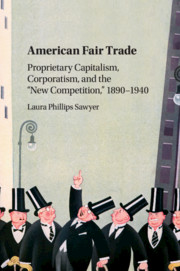Book contents
- American Fair Trade
- American Fair Trade
- Copyright page
- Dedication
- Contents
- Preface
- Acknowledgments
- Introduction American Competition
- 1 Contracts and Competition in an Era of Economic Uncertainty, 1880–1890
- 2 The Origins of American Fair Trade
- 3 The Economics and Ideology of American Fair Trade
- 4 Institutionalizing the “New Competition”
- 5 California Fair Trade
- 6 Managing Competition in the Great Depression
- Conclusion Varieties of Competition and Corporatism in American Governance
- Bibliography
- Case Index
- Subject Index
- References
Bibliography
Published online by Cambridge University Press: 21 December 2017
- American Fair Trade
- American Fair Trade
- Copyright page
- Dedication
- Contents
- Preface
- Acknowledgments
- Introduction American Competition
- 1 Contracts and Competition in an Era of Economic Uncertainty, 1880–1890
- 2 The Origins of American Fair Trade
- 3 The Economics and Ideology of American Fair Trade
- 4 Institutionalizing the “New Competition”
- 5 California Fair Trade
- 6 Managing Competition in the Great Depression
- Conclusion Varieties of Competition and Corporatism in American Governance
- Bibliography
- Case Index
- Subject Index
- References
- Type
- Chapter
- Information
- American Fair TradeProprietary Capitalism, Corporatism, and the 'New Competition,' 1890–1940, pp. 319 - 352Publisher: Cambridge University PressPrint publication year: 2018



